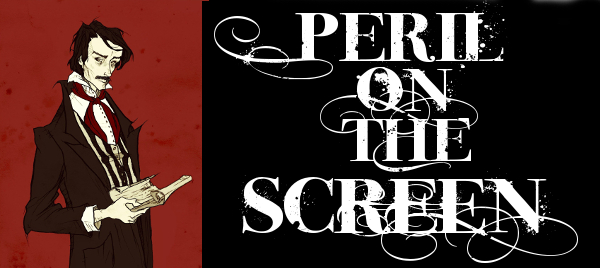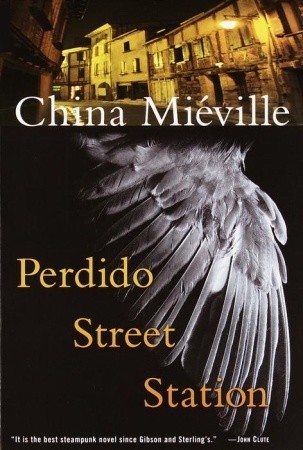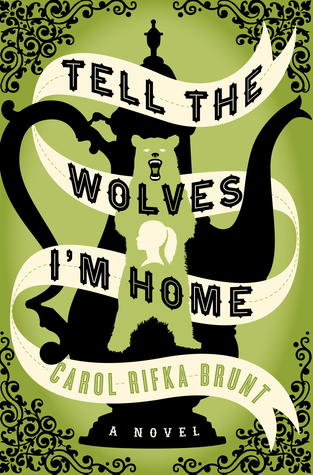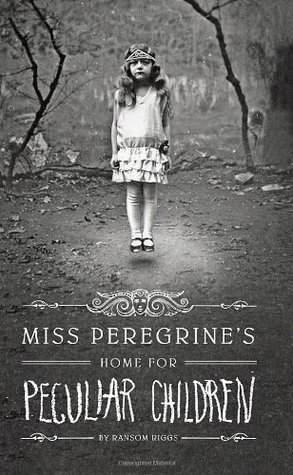
I almost forgot I pledged to join “Peril on the Screen” too. Luckily, spouse’s and my general TV/movie viewing choices tend to fall into the mystery/horror/thriller/suspense categories anyway. I can’t recall all the way back to September 1 by myself, so we’ll check the Netflix “recently watched” list and get started.
Actually, no. First, let’s talk about TV!

Naturally, The Walking Dead season premiere was avidly consumed this past Sunday, and it took up almost immediately where last season left off. I was rather surprised by the way the episode turned out with regard to a certain threat, but I’m awfully happy to see Rick putting the band back together. I’m so glad this show is back, even if it’s more gory than ever! Yeah, I usually watch a good third of each episode through my fingers. Love the story but the blood? Not so much. But I’m looking forward to the rest of the season, regardless.

Then there’s Sleepy Hollow, back for its second season. The Four Horsemen of the Apocalypse are still approaching: what will Ichabod and Abby do next to thwart their plans? Spouse and I both love this show not only because of a distant family connection with its source material, but because it’s so well done! The storyline is utterly implausible, of course, but the acting is wonderful, the stars very easy on the eyes, and all the supporting players are superb. I don’t quite know what to think about the newest character, Nick Hawley the “antiquities” hunter, but I’m sure his loyalties will be revealed soon. And let me just say this: I’m extremely happy to see a mainstream network (which Fox is now) series featuring a woman of color in a powerful leading role without making her a racial stereotype (at least, not so far as this middle-aged Caucasian woman can discern).

Speaking of Fox, we’re also rather impressed with Gotham, the network’s take on the origin stories of Batman, Catwoman, Penguin, and so forth. Thus far, young Bruce (played by David Mazouz) is rather whiny and self-involved, which is understandable due to his age and trauma, and Fox has wisely limited his screen time, preferring to concentrate on the adults in the series and the events that will give rise to the Caped Crusader and his sworn enemies. The bad thing about young Bruce’s limited screen time is it also limits the screen time of the loyal Alfred, played by Sean Pertwee (yes, the son of the Third Doctor and a marvelous actor in his own right).

Finally on the “small screen” is Fox’s Gracepoint, a nearly shot-for-shot remake of BBC America’s Broadchurch, aired earlier this year, and featuring David Tennant reviving his Broadchurch role as a detective brought in to investigate the murder of a boy in a small town. I wasn’t sure I was going to watch this, not even for the pleasure of Mr. Tennant’s company (and his partially successful American accent), since I’d already seen the BBC America production, but then I learned it would have two or three more episodes than the BBC show, and possibly a different ending. Thus far, nothing new has been revealed, but the casting is good, the acting is very good, and the location (northern California coast, ostensibly Mendocino or Humboldt County) is gorgeous.
 On the big screen (which, in our house, means movies we watched at home because we seldom go to the cinema), Netflix must serve as a reminder. In September, we saw The Last Days on Mars, which to tell the truth I remember virtually nothing about except that it starred Liev Schreiber (yum) and had a bunch of folks in spacesuits running around trying to kill each other. According to Netflix, I gave it three stars (for “I liked it”) so it was at least enjoyable.
On the big screen (which, in our house, means movies we watched at home because we seldom go to the cinema), Netflix must serve as a reminder. In September, we saw The Last Days on Mars, which to tell the truth I remember virtually nothing about except that it starred Liev Schreiber (yum) and had a bunch of folks in spacesuits running around trying to kill each other. According to Netflix, I gave it three stars (for “I liked it”) so it was at least enjoyable.
 A Japanese film with English subtitles caught me by surprise. The Doomsday Book is a sci-fi anthology flick: three separate stories, three separate takes on an apocalypse (actual or implied). In the first segment, zombies. Second segment, robots. Third segment, death from the skies. Of the three segments, I think the zombie story is the least successful. I loved the Zen robot in segment two; and the third story was quite good and funny, but left me scratching my head (which means I should probably watch it again because obviously I missed something). The subtitles are only a marginal distraction from the gorgeous cinematography. It’s not rated, but I wouldn’t call it family-friendly by any means.
A Japanese film with English subtitles caught me by surprise. The Doomsday Book is a sci-fi anthology flick: three separate stories, three separate takes on an apocalypse (actual or implied). In the first segment, zombies. Second segment, robots. Third segment, death from the skies. Of the three segments, I think the zombie story is the least successful. I loved the Zen robot in segment two; and the third story was quite good and funny, but left me scratching my head (which means I should probably watch it again because obviously I missed something). The subtitles are only a marginal distraction from the gorgeous cinematography. It’s not rated, but I wouldn’t call it family-friendly by any means.
 How I Live Now (based on the YA novel of the same name) was another post-apocalyptic flick that came as a pleasant surprise. Daisy, an American teenager, is sent abroad to spend the summer with her English cousins. Shortly after she arrives, nuclear war breaks out, leaving Daisy and her cousins alone in the countryside to survive as best they can. In the beginning, Daisy is clearly a bitter, self-entitled, selfish little beeyotch; she’s as unlikeable as a character can be without murdering someone. As the film progresses, though, we learn just a little about what made her that way, but more importantly, we watch her grow up as she is forced to care about someone other than herself. Some truly heart-rending scenes and lovely acting by all involved.
How I Live Now (based on the YA novel of the same name) was another post-apocalyptic flick that came as a pleasant surprise. Daisy, an American teenager, is sent abroad to spend the summer with her English cousins. Shortly after she arrives, nuclear war breaks out, leaving Daisy and her cousins alone in the countryside to survive as best they can. In the beginning, Daisy is clearly a bitter, self-entitled, selfish little beeyotch; she’s as unlikeable as a character can be without murdering someone. As the film progresses, though, we learn just a little about what made her that way, but more importantly, we watch her grow up as she is forced to care about someone other than herself. Some truly heart-rending scenes and lovely acting by all involved.
 And finally, Solomon Kane, an historical horror story that gets its history all collywobbled, but still manages to be entertaining. The title character is an evil mercenary who plunders and pillages and murders at will in what appears to be the Middle East (circa 1600). But when he’s confronted by The Devil’s Reaper come to claim his soul, he escapes to his native England and takes up residence in a monastery to atone for his lifetime of sin. A year later, the abbot tells Kane his destiny does not lie within the abbey walls, and he must leave his sanctuary to seek his true path. Naturally, his true path leads to encounters with witches, demons, and other types of evil. It’s actually rather silly, and I suspect the historical context is there only for the mud and the blood and the general societal belief in witchcraft, because English Catholicism is awfully conspicuous for events taking
And finally, Solomon Kane, an historical horror story that gets its history all collywobbled, but still manages to be entertaining. The title character is an evil mercenary who plunders and pillages and murders at will in what appears to be the Middle East (circa 1600). But when he’s confronted by The Devil’s Reaper come to claim his soul, he escapes to his native England and takes up residence in a monastery to atone for his lifetime of sin. A year later, the abbot tells Kane his destiny does not lie within the abbey walls, and he must leave his sanctuary to seek his true path. Naturally, his true path leads to encounters with witches, demons, and other types of evil. It’s actually rather silly, and I suspect the historical context is there only for the mud and the blood and the general societal belief in witchcraft, because English Catholicism is awfully conspicuous for events taking  place in the last few years of Elizabeth I’s reign. Still, the film stars James Purefoy (yum) and features the marvelous Pete Postlethwaite (may flights of angels sing him to his rest) and equally marvelous Alice Krige in crucial character roles.
place in the last few years of Elizabeth I’s reign. Still, the film stars James Purefoy (yum) and features the marvelous Pete Postlethwaite (may flights of angels sing him to his rest) and equally marvelous Alice Krige in crucial character roles.
And that’s it thus far for Peril on the Screen. Click that badge over there to be whisked away to a list of other R.I.P. IX blog entries.
 This Way to the End Times: Classic Tales of the Apocalypse by Robert Silverberg
This Way to the End Times: Classic Tales of the Apocalypse by Robert Silverberg The Heart Is a Lonely Hunter by Carson McCullers
The Heart Is a Lonely Hunter by Carson McCullers






































